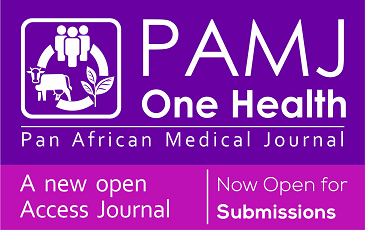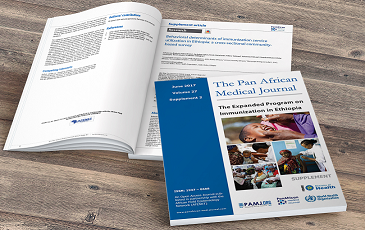Acute lower limb ischemia in pheochromocytoma surgery: a rare but serious complication (a case report)
Kaoutar El Fakhr, Hasna Darouich, Samira Kalouch
Corresponding author: Kaoutar El Fakhr, Pediatric Anesthesia and Intensive Care, Mother and Child Hospital Abderrahim Harouchi, University Hospital Center Ibn Rochd, Casablanca, Morocco 
Received: 22 Mar 2025 - Accepted: 09 Jun 2025 - Published: 23 Jun 2025
Domain: Emergency medicine,Intensive care medicine,Urgent Care Medicine
Keywords: Limb ischemia, thrombosis, pheochromocytoma
Funding: This research received no specific grant from any funding agency in the public, commercial, or not-for-profit sectors.
©Kaoutar El Fakhr et al. PAMJ Clinical Medicine (ISSN: 2707-2797). This is an Open Access article distributed under the terms of the Creative Commons Attribution International 4.0 License (https://creativecommons.org/licenses/by/4.0/), which permits unrestricted use, distribution, and reproduction in any medium, provided the original work is properly cited.
Cite this article: Kaoutar El Fakhr et al. Acute lower limb ischemia in pheochromocytoma surgery: a rare but serious complication (a case report). PAMJ Clinical Medicine. 2025;18:7. [doi: 10.11604/pamj-cm.2025.18.7.47334]
Available online at: https://www.clinical-medicine.panafrican-med-journal.com//content/article/18/7/full
Case report 
Acute lower limb ischemia in pheochromocytoma surgery: a rare but serious complication (a case report)
Acute lower limb ischemia in pheochromocytoma surgery: a rare but serious complication (a case report)
&Corresponding author
Acute limb ischemia related to pheochromocytoma is rare. Pheochromocytomas are rare catecholamine-secreting tumors, classically presenting with paroxysmal hypertension, headaches, and excessive sweating. In rare cases, pheochromocytomas have been associated with acute limb ischemia. This case report presents a pediatric patient who underwent pheochromocytoma resection and developed intraoperative arterial thrombosis leading to acute lower limb ischemia. Although this complication is rare, it poses a significant risk and requires prompt recognition and management. Pheochromocytomas are known to cause vascular complications due to excessive catecholamine secretion, potentially leading to vasospasm, endothelial dysfunction, and a hypercoagulable state. A literature review highlights similar cases and discusses potential mechanisms leading to intraoperative arterial thrombosis. Strategies for prevention, early detection, and management of such complications are also explored. Acute lower limb ischemia due to intraoperative arterial thrombosis is a rare but serious complication of pheochromocytoma surgery. Awareness of this potential complication is essential for timely intervention and improved clinical outcomes.
Pheochromocytoma is a rare adrenal medullary tumor arising from chromaffin cells. It is an uncommon condition in children [1]. The placement of an arterial catheter is a crucial step in the anesthesia management of pheochromocytoma to control blood pressure levels. Although complications from arterial catheter placement are rare, they can be severe and lead to limb amputation. We report a case of subtotal arterial thrombosis following femoral arterial catheterization.
Patient information: an 11-year-old female patient, with no known medical history, presented with profuse sweating and intense headaches. Diagnostic imaging confirmed bilateral pheochromocytoma, and the patient was scheduled for left adrenalectomy.
Clinical findings: during the pre-anesthetic consultation, the clinical examination revealed good general health, blood pressure (BP) of 170/90 mmHg, normal cardiopulmonary auscultation, and no predictive signs of difficult intubation (Mallampati II). Cardiologic evaluation was performed and found to be normal. The patient was started on alpha-blockers, beta-blockers, and a calcium channel inhibitor.
Diagnosis and management: at the operating room admission, anesthesia induction was performed with fentanyl (2μg/kg), etomidate (0.3mg/kg), and rocuronium (0.6mg/kg). Intubation was easy with a 5.5 CH cuffed endotracheal tube. Anesthesia was maintained with fentanyl, isoflurane, midazolam, and rocuronium. A right central venous catheter and a right femoral arterial catheter were placed without incident for invasive blood pressure monitoring. Hemodynamic management was achieved with nicardipine (1mg/ml in an electric syringe). Blood pressure remained stable between 90/60 and 110/70 mmHg throughout the procedure. The surgery lasted 10 hours without hemodynamic instability during tumor mobilization and resection. At the end of the surgery, the limb was cold with diminished femoral and popliteal pulses (Figure 1). The arterial catheter was removed, and a Doppler ultrasound confirmed a subtotal thrombosis of the common femoral artery (CFA) and total occlusion of the deep femoral artery (DFA).
Therapeutic interventions: the patient was started on unfractionated heparin (500 IU/kg/day) at 6 hours post-op, and a thrombophilia workup was initiated. She was then taken back to the operating room for embolectomy using a Fogarty catheter. Immediate postoperative evolution showed restored femoral and popliteal pulses, but the anterior tibial pulse remained absent (Figure 2). A CT angiogram confirmed subtotal occlusion of the distal portion of the right dorsal pedis artery, with weak opacification of the plantar arch. The patient remained on unfractionated heparin (600 IU/kg/day) with a target activated clotting time (ACT) of 1.5-2.5 times the baseline, and motor physiotherapy was initiated with good evolution. By the second postoperative day, all pulses were palpable. The patient was transferred to the pediatric visceral surgery department on postoperative day 2. Two months later, she was readmitted for right adrenalectomy. Preoperative assessment revealed a conscious patient in good general health, receiving aspirin, calcium channel blockers, alpha-blockers, and beta-blockers. The thrombophilia workup showed: protein C: 103%; protein S: 42%; antithrombin III: 100%. The anesthesia protocol was similar to the first surgery, but without femoral arterial catheterization. Nicardipine infusion was stopped once blood pressure normalized. However, intraoperative hemodynamic instability during tumor resection required norepinephrine (0.3 γ/kg/min). The patient was successfully weaned in intensive care with a favorable clinical outcome (Figure 3).
Patient´s perspective: the patient did not fully grasp the risks. She relied on her parents and initially felt distress over unusual pain, difficulty moving her leg, and cold sensations postoperatively. Medical staff and family played a crucial role in explaining the situation. Over time, she noticed gradual recovery and accepted medical care more readily as she saw progress. Ultimately, she overcame the experience with a positive outcome.
Parental consent: the patient's parents have given their consent for the writing and publication of her case.
Pheochromocytoma is a rare tumor that develops from chromaffin cells. It is a rare and severe condition in children. While Menard's triad is commonly observed in adults, clinical signs in children are often subtle [1]. Imaging helps guide the diagnosis, which is confirmed by measuring urinary or plasma catecholamine levels [2]. Early onset and bilateral involvement contribute to its severity. Its management is multidisciplinary, and surgical treatment consists of tumor excision. Anesthesia for pheochromocytoma remains challenging due to the uncontrolled secretion of catecholamines. Surgical management requires a multidisciplinary approach to reduce perioperative morbidity and mortality.
The placement of an arterial catheter is mandatory for perioperative blood pressure management. Although a simple procedure, it is not without risks. Complications are rare but can be severe. The causes of ischemia are varied, and idiopathic cases have been reported [3,4]. Treatment can be medical, surgical, or interventional radiology-based [5,6]. Literature reports cases of ischemia occurring in the context of pheochromocytoma. The excessive synthesis of catecholamines promotes thrombotic events [7,8]. Despite significant advancements in management, morbidity and mortality rates remain high. Early revascularization (within six hours of diagnosis) improves prognosis [9].
Pheochromocytoma is a rare but potentially severe tumor. Beyond its typical clinical presentation, it can cause severe ischemic complications.
The authors declare no competing interests.
All the authors have read and agreed to the final manuscript.
Figure 1: clinical appearance of lower limb ischemia
Figure 2: limb revascularization after embolectomy
Figure 3: limb evolution two month postoperatively
- Dibi A, Jabourik F, Kissra M, Abouhafs A, Kaddouri N, Benhmamouch MN et al. Le phéochromocytome chez l´enfant à propos de 4 cas. Journal de Pédiatrie et de Puériculture. 2012 Dec;25(6):349-52. Google Scholar
- Khattala K, Elmadi A, Mahmoudi A, Rami M, Bouabdallah Y. Management of bilateral pheochromocytoma - case report. Pan Afr Med J. 2014;18:97. PubMed | Google Scholar
- Bassono YJ, Charra B, Ezzouine H, Benslama A, Motaouakkil S. Ischémie du membre inférieur sur thrombose de cathéter artériel fémoral. Annales Françaises d´Anesthésie et de Réanimation. 2010 Apr;29(4):316-7.
- Sanches SMV, Aquino MDA, Leite BDL, Cerqueira MMBDF. Conservative treatment of acute limb ischemia in a child - case report. J vasc bras. 2022;21:e20220010. PubMed | Google Scholar
- Lim S, Javorski MJ, Halandras PM, Kuo PC, Aulivola B, Crisostomo P. Epidemiology, treatment, and outcomes of acute limb ischemia in the pediatric population. Journal of Vascular Surgery. 2018 Jul;68(1):182-8. PubMed | Google Scholar
- Arshad A, McCarthy MJ. Management of Limb Ischaemia in the Neonate and Infant. European Journal of Vascular and Endovascular Surgery. 2009 Jul;38(1):61-5. PubMed | Google Scholar
- Nambiar KV, Rajan Chalappurath D. Thrombotic Tendencies in Excess Catecholamine States. In: Uçar A, editor. Biogenic Amines in Neurotransmission and Human Disease. IntechOpen. 2019. Google Scholar
- Van DH, Boesmans E, Defraigne JO. Acute limb ischemia. Rev Med Liege. 2018 May;73(5-6):304-11. PubMed | Google Scholar
- Ahsayan K, Ghalem A, Bouziane M, El Ouafi N, Housni B. Ischémie aiguë du membre inférieur et acidocétose diabétique révélant un phéochromocytome. Anesthésie & Réanimation. 2019 Jul;5(4):337-41. Google Scholar







